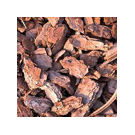Dried Natural Green Moss ( Per Kg)

Description
Green Sphagnum is easily distinguished from other mosses by its habit ofgrowth, its soft thick fullness (each head resembling a full and elaborate bloom of edelweiss), and its vividly pale-green colour.
Its stem is densely beset with narrow, broken-up leaves, a branch being emitted at every fourth leaf; many of these are turned downwards and applied more or less closely to the stem.
Though the pale-green species is the most common, there are several others, large and small, varying in colour from the very light green (never dark green) to yellow, and all shades of pink to deep red and brown. The Moss often attracts attention by its display of beautiful shades of colour, such patches being avoided by wary persons, who do not wish to get their feet wet.
Every part of the moss is permeated with minute tubes and spaces, resulting in a system of delicate capillary tubes, having the effect of a very fine sponge. The cells readily absorb water and retain it. The water can be squeezed out, but the Moss does not collapse and is ready to take in fluid again.
The plant is not dependent on soil water, but also absorbs moisture from the atmosphere, and is laden throughout with water retained in its delicate cells.
The presence of these capillary cells makes Sphagnum economically useful. In horticulture, long before the war, this Moss had a marketable value, in combination with peat fibre, being widely used as a rooting medium for orchids, on account of the remarkable manner in which it retains moisture, a handful when wet being like a sponge, and when chopped and mixed with soil in pots preventing moisture passing too quickly through the soil.


